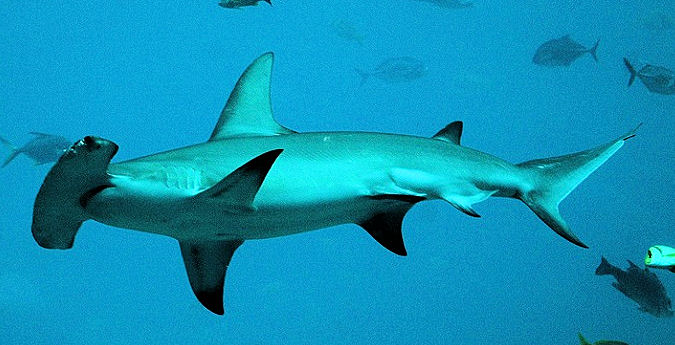Marine biologists in Florida may have discovered the first-ever great hammerhead shark nursery, one of the largest predatory shark species. The nursery is believed to be located in Biscayne Bay, a developed area on the southeast coast of Florida. Unlike other shark species, great hammerheads give birth to live young, and the juveniles spend their first year feeding on small fish in the sheltered shallow waters of the bay.
Catherine Macdonald, director of the University of Miami’s Shark Research and Conservation Program, and her team initiated a tagging program to study the habits of great hammerheads as they grow and age. The research aims to understand the sharks’ use of the habitat and how it changes over time. The discovery of the nursery raises questions about the larger migratory distances covered by great hammerheads throughout the year.
This article, “A shark nursery may be a stone’s throw from Miami’s bright lights“, also discusses the challenges faced by great hammerheads, including the impact of recreational fishing on their population. The sharks are more susceptible to the effects of being caught, even if released, which can lead to high mortality levels. Overfishing, both commercially and recreationally, has contributed to a decline in the population, with evidence of inbreeding among the remaining sharks.
Great hammerheads (Sphyrna mokarran) are known for their distinctive hammer-shaped heads and impressive size. The largest ever caught measured 20 feet (6.1 meters), comparable in length to the largest confirmed great white shark. As one of the largest predatory sharks, encountering a great hammerhead swimming towards you can be a formidable and imposing sight.
Scientists are calling for stricter protection measures in Biscayne Bay, where the nursery is located, especially considering the potential threats posed by climate change and rising sea temperatures. The article concludes by emphasizing the need for careful management of the recreational fishing industry to ensure the survival of great hammerhead sharks and their habitats.

